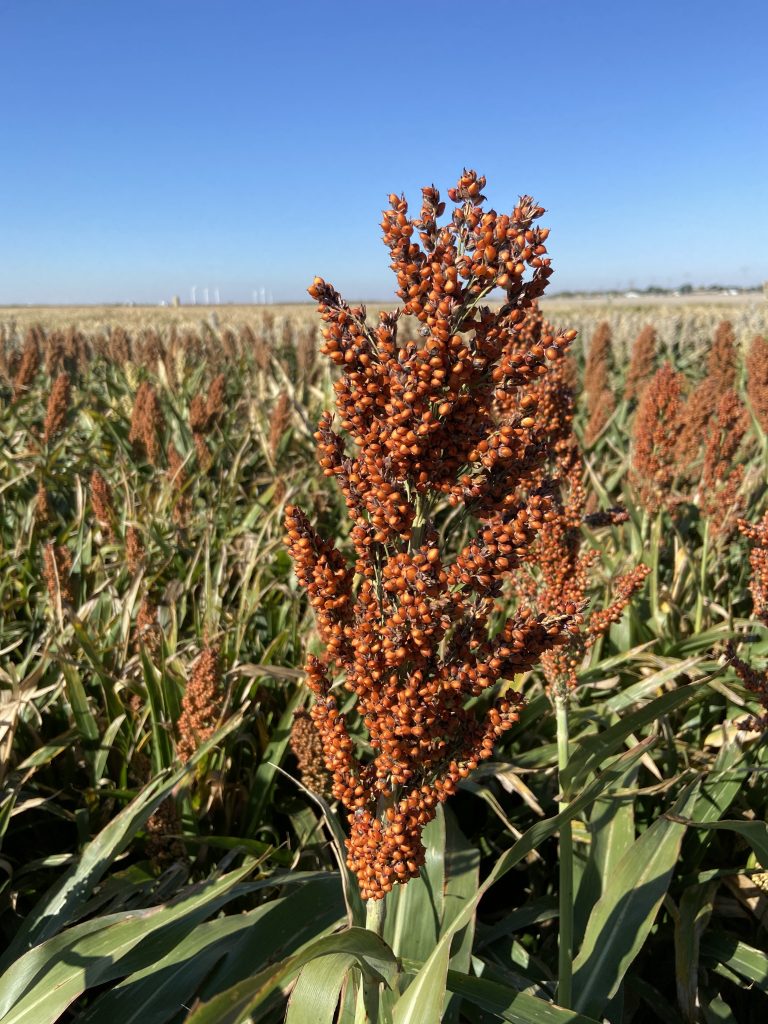Persistent drought, high temperatures, soaring input costs and poor commodity prices have created challenges for all crops. With this outlook, grain sorghum emerges as an attractive option for the 2025 planting season, offering advantages such as low input costs, crop rotation benefits and resilience to drought.
Economic benefits: Low seed costs and input efficiency

One of the primary reasons to consider grain sorghum is its cost-effectiveness. Sorghum seed is significantly less expensive compared to other crops, with costs ranging from $6 to $19 per acre, depending on seeding rate and desired seed treatments.
Sorghum has relatively few insect and disease issues. Hybrids with sorghum aphid tolerance have greatly reduced the need for an insecticide application. When aphids do reach threshold levels, they can be effectively controlled with Sivanto Prime, Transform or Sefina insecticides.
Foliar diseases are seldom a problem in the Great Plains region with its dry climate. In wetter regions, such as the Southeast, anthracnose is the No. 1 disease that infects sorghum. Selecting a hybrid with good anthracnose tolerance can go a long way in avoiding this disease.
Sorghum in crop rotation: Yield benefits for other crops
Sorghum’s advantages extend beyond cost savings; it also provides substantial benefits when used in crop rotations with cotton, soybeans and even corn. Rotating crops can improve soil health, break disease cycles and increase yields.
- Cotton rotation: Sorghum plays an important role in breaking soil disease cycles, particularly for verticillium wilt, a common issue in cotton. Additionally, sorghum residue after harvest enhances soil moisture retention and helps protect emerging cotton seedlings from wind damage. A 2017 study by Texas A&M University found that cotton yields increased by 26% when rotated with sorghum compared to continuous cotton planting.
- Soybean rotation: In a multiyear trial conducted near Mead, Nebraska, soybeans planted after sorghum experienced a 16.6% yield increase compared to continuous soybean planting. This increase in yield has been attributed to improved soil fertility, better physical properties of the soil, more effective weed control and reduced diseases, nematodes and insect pests.
- Corn rotation: One of the more surprising findings for many growers is that corn also benefits from being rotated with sorghum. A five-year Kansas State University trial demonstrated that corn yields increased by 8.4% when following sorghum compared to continuous corn. These yield increases reflect the long-term benefits of improved soil health and nutrient cycling that sorghum introduces into a cropping system.
Herbicide innovations and grass control
Grass control has traditionally been a challenge for growers considering sorghum. However, new herbicide technologies have significantly improved management options.
Non-GMO herbicide technologies like Double Team (S&W Seeds), igrowth (Advanta Seeds) and Inzen (Corteva) have made it possible for farmers to effectively control grass, including volunteer corn, in their sorghum fields. This advancement removes a key obstacle that has deterred some growers from planting sorghum in the past.
Irrigation efficiency and drought resilience
Sorghum is commonly planted as a dryland crop, but it can also thrive under limited irrigation. One of the crop’s strengths is its ability to withstand short periods without water, making it a valuable addition to fields with variable water availability.
For example, growers may split a field between corn or cotton and sorghum, concentrating irrigation on water-sensitive crops while knowing that sorghum can wait a few extra days without suffering significant yield losses. This flexibility allows growers to optimize their water resources more effectively.
As growers prepare for 2025, sorghum offers a compelling case for inclusion in crop rotations. Its low seed costs, drought resilience and benefits in crop rotation provide both economic and agronomic advantages.
Editor’s note: Brent Bean, Ph.D., is the Sorghum Checkoff director of agronomy, Lubbock, Texas. For more information, visit www.sorghumcheckoff.com.




